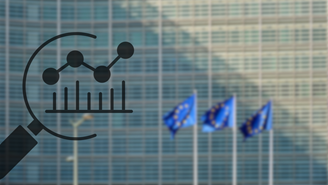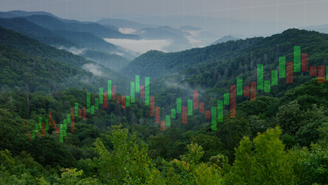The global equities market experienced substantial growth over the first quarter of 2019 as the FTSE All-World (AW) index returned 12.5%. But this growth spurt comes on the tail of a significant selloff during the preceding quarter; the total return of the FTSE AW over Q4 2018 sunk to -12.6%.[i]
In our latest Spotlight report, Beware of Bears: A Look Back at the Downswing of 2018, we examine the Q4 downturn through an Environmental, Social and Governance (ESG) lens. As shown in Figure 1, at the outset of Q4 2018, 24% of the market capitalization (weight) of the FTSE AW UCITS ETF (our benchmark proxy) was associated with companies rated as having high-severe levels of ESG risk.
Figure 1: FTSE AW ESG Risk Rating category by weight and number of companies*

Sources: Sustainalytics, FTSE Russell, Vanguard, Bloomberg
*Index proxied by FTSE AW UCITS ETF (VWRD). Sustainalytics ESG data retrieved 24 September 2018. ESG ratings cover more than 90% of the 3,166 VWRD constituents and 99% of the index proxy by weight.
As part of our analysis, we designed a sample portfolio based on the FTSE AW benchmark. Our sample portfolio is structured according to a set of rules that could potentially be implemented in a passive index fund strategy: it selects the best ESG performers within each of the sectors in the index while constraining normalized sector weights to within +/- 5% of the benchmark’s sector allocations. The portfolio captures about 300 (10%) of the 3,000+ securities in the FTSE AW universe.
As indicated by Figure 2, implementing these rules skews the distribution of ESG risk towards the negligible-low categories and excludes securities rated as having high-severe levels of ESG risk. Stocks in the low ESG risk basket dominate the portfolio, comprising 78% by weight.
Figure 2: ESG 300 AW sample portfolio ESG Risk Rating category by weight and number of companies*

Source: Sustainalytics
Comparing the financial performance of the ESG 300 AW and the benchmark during the down period of Q4 2018 reveals several insights. Although the ESG 300 AW covers only 300 of the original 3,000+ companies present in the FTSE AW benchmark, its tracking error over the period was only 0.29%. The volatility, as measured by the standard deviation of total returns over the study period, was lower for the portfolio (0.96%) than for the benchmark (1.04%), as was its overall downside risk (Port=11.08% vs Bench=11.69%).
As shown in Figure 3, the ESG 300 AW sample portfolio would have avoided the full extent of the benchmark’s decline during the last quarter of 2018. The maximum drawdown of the portfolio was -15.12% compared to the benchmark’s max drawdown of -16.58%. By the close of Q4, the total return of portfolio (-11.95%) outperformed that of the benchmark (-12.71%) by 77 bps.
At the lowest point in Q4, the ESG 300 AW portfolio lost 146 bps less than the benchmark. The maximum drawdown of the portfolio and the index were, respectively, -15.12% and -16.58%.
Figure 3: Q4 total returns (%, USD), ESG 300 AW vs FTSE AW*

Sources: Sustainalytics, FTSE Russell, Vanguard, Bloomberg
*Index proxied by FTSE AW UCITS ETF (VWRD).
While the results of this study are consistent with the idea that ESG integration can help mitigate downturn impacts, more research is needed to test this hypothesis and draw general conclusions with confidence.
To learn more about this study, including our portfolio attribution analysis and our outlook on passive ESG investment analysis, download the full report at https://www.sustainalytics.com/esg-research/issue-spotlights/beware-bears-looking-at-2018-market-downswing-esg/
[i] Morningstar Direct (2019), Global Database, Market Indexes, accessed (01.04.2019) at: https://www.morningstar.com/products/direct.




